University Project - Jul. 2022
In the course "Title Design" the task was to create a short intro for an existing film. My group decided on "Fantastic Beasts" and created a live action intro showing the notebook of the main character, Newt Scamander.
Concept
We worked in groups of four and at first had to decide which film to use for an intro. We decided on Fantastic Beasts. We mostly liked the creative possibilities of the Fantasy genre.
Then it was time to come up with ideas for the story of the intro. One of our ideas stood out the most. We wanted to focus on Newt Scamander's notebook with all the different animals. So we chose the four most common animals of the film: Billywig, Demiguise, Niffler and Bowtruckle.
The concept was to fill the pages of the notebook with drawings, scribbles and information about the animals. The book should give some first notes about the film. It should also come alive with things coming out of the book and a magical turning of the pages. We wanted to use many techniques such as stop-motion, frame-by-frame animation and After Effects animation.
Animatic
After writing down our idea in detail, we needed an animatic to visualise the plot. We created rough drawings which later on were animated for the animatic.
Our first storyline was a bit different from the final intro because we often had to solve problems and come up with alternative plots. For example, we wanted to start with a rolling coin, but without the use of 3D programs, we decided that it would be too much work. So we changed the scene to a tracking shot. Another thing that changed was the final scene. At first we wanted the little Bowtruckle to spill ink on the page. But in the end we didn't have time to animate him, so we changed the scene and created a black fog to represent the Obscurus.
Props
Once our concept was ready, we had to organise and craft the props. We bought a notebook and one of our group members designed it and gave it a used look by putting it in dirt.
We also needed the origami Billywigs, which should fly out of one page. Here we had a bit of a problem. Folding a Billywig was very complicated and we found a good instruction on another animal called Occamy. So we changed the animal. We glued some wire into the birds, to make them easier to handle with stop-motion.
The biggest part we had to design was the table, where the notebook would be placed in the middle. We set up a large wooden plank inside of a dark stop-motion room. We started off with just a few props, but it soon became clear that we needed a lot more. The arrangement of all the items was a bit difficult. We did not want it to look staged, but very authentic. We tried to make the arrangement as random as possible and also spread some dirt.
After a while most of our props were ready and we could start filming some test shots.
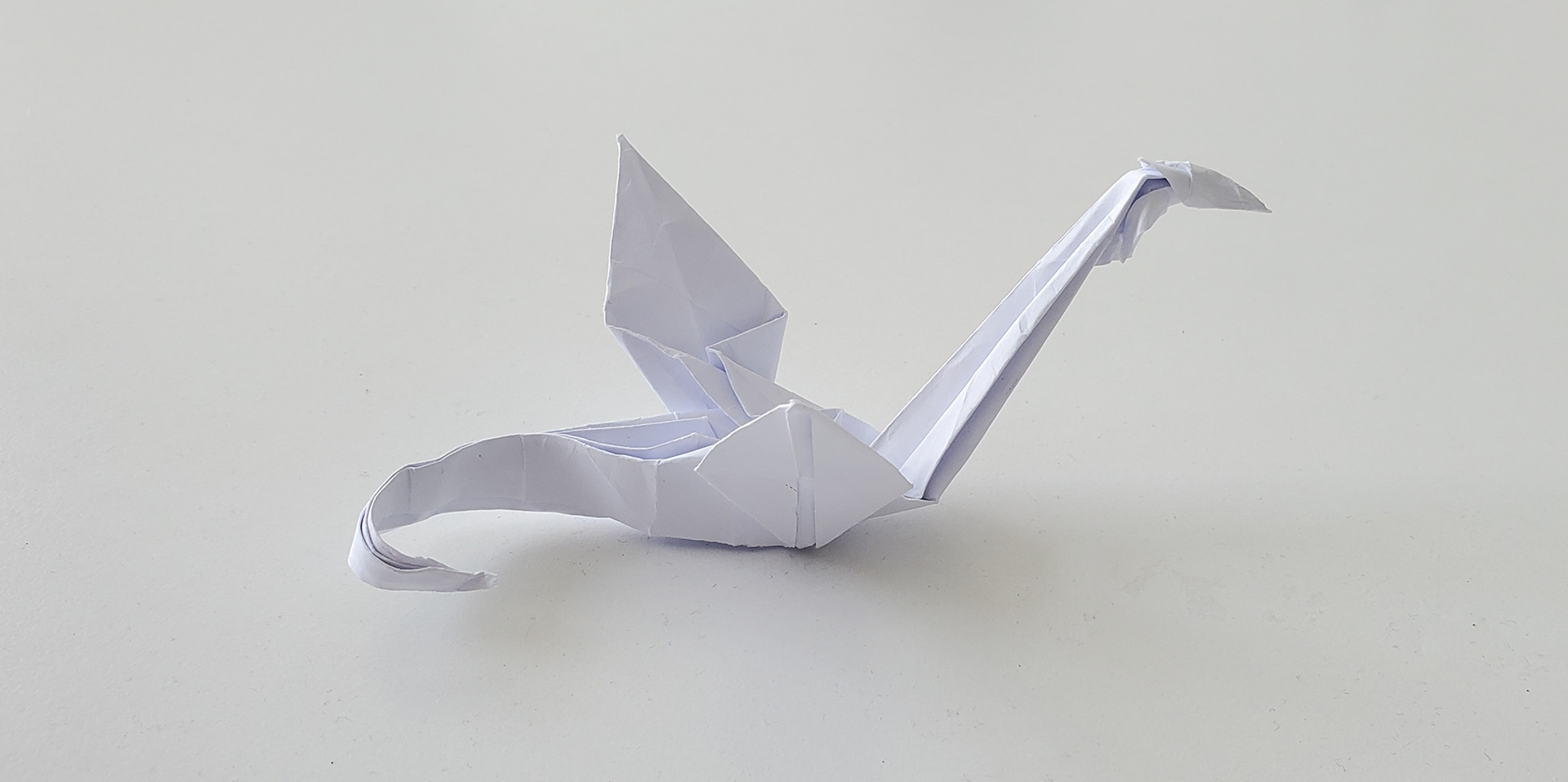
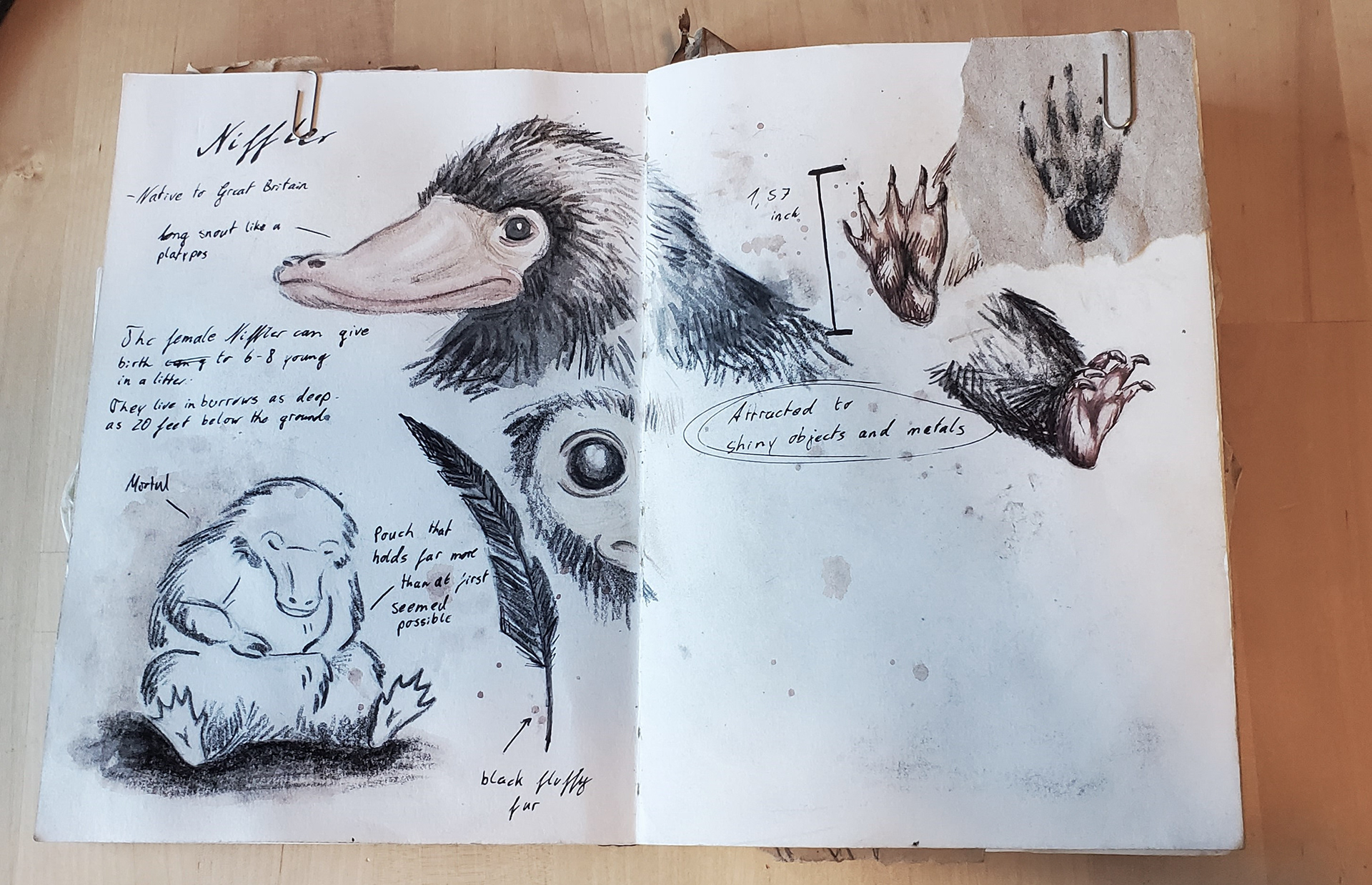
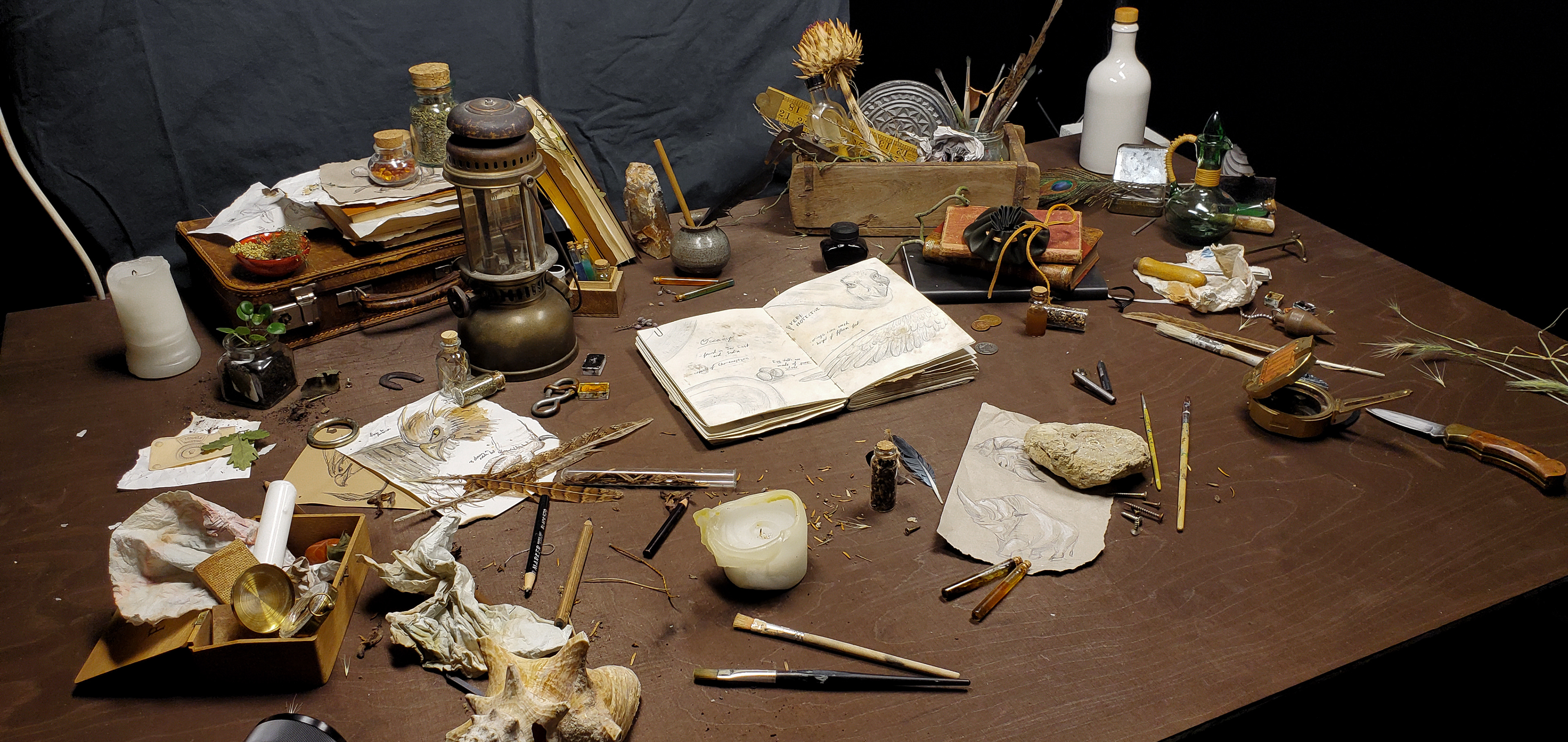
Production
In our test shots we noticed a big problem in the first scene. We wanted to give an overview of the table with a gimbal tracking shot. This did not work as planned bacause the gimbal was not doing exactly what we wanted. We almost spend two days experimenting with the gimbal until we got some good shot. Later in the project we tried another solution using a slider. This was much easier and gave us much smoother tracking shots. The only problem was that we had to edit the tracking shots together and didn't have one long shot, like we had planned. So apparently we spend a lot of unnecessary time with the gimbal but we learned from it.
The other shots were pretty easy to manage. We had a big tripod that we positioned where we needed it and then filmed a static shot. The only thing we had to do was "magically" turn the pages. We used a hair and glued it between the pages we needed. The hair was so thin you could hardly see it.
Then came antother difficult part. The stop-motion birds and the city. When all of our book shots were finished, we cleaned up our set and laid out green paper as a green screen. We started with the birds and put each one on a piece of wire to change their position. The camera angle was the same as in the book scene where they would appear. We did all animation using Dragonframe to control the positioning and timing. It was a long process, but it worked perfectly. The city worked a bit faster. We built a paper 3D model of New York, which was the most time-consuming part. Then we glued it all on an A3 paper. We thought this was the easiest way because we had a larger version of two book pages. We filmed the falling of a page from many different angles, so we had a lot to work with. For the Obscurus we just put a piece of paper on the green screen and teared it.


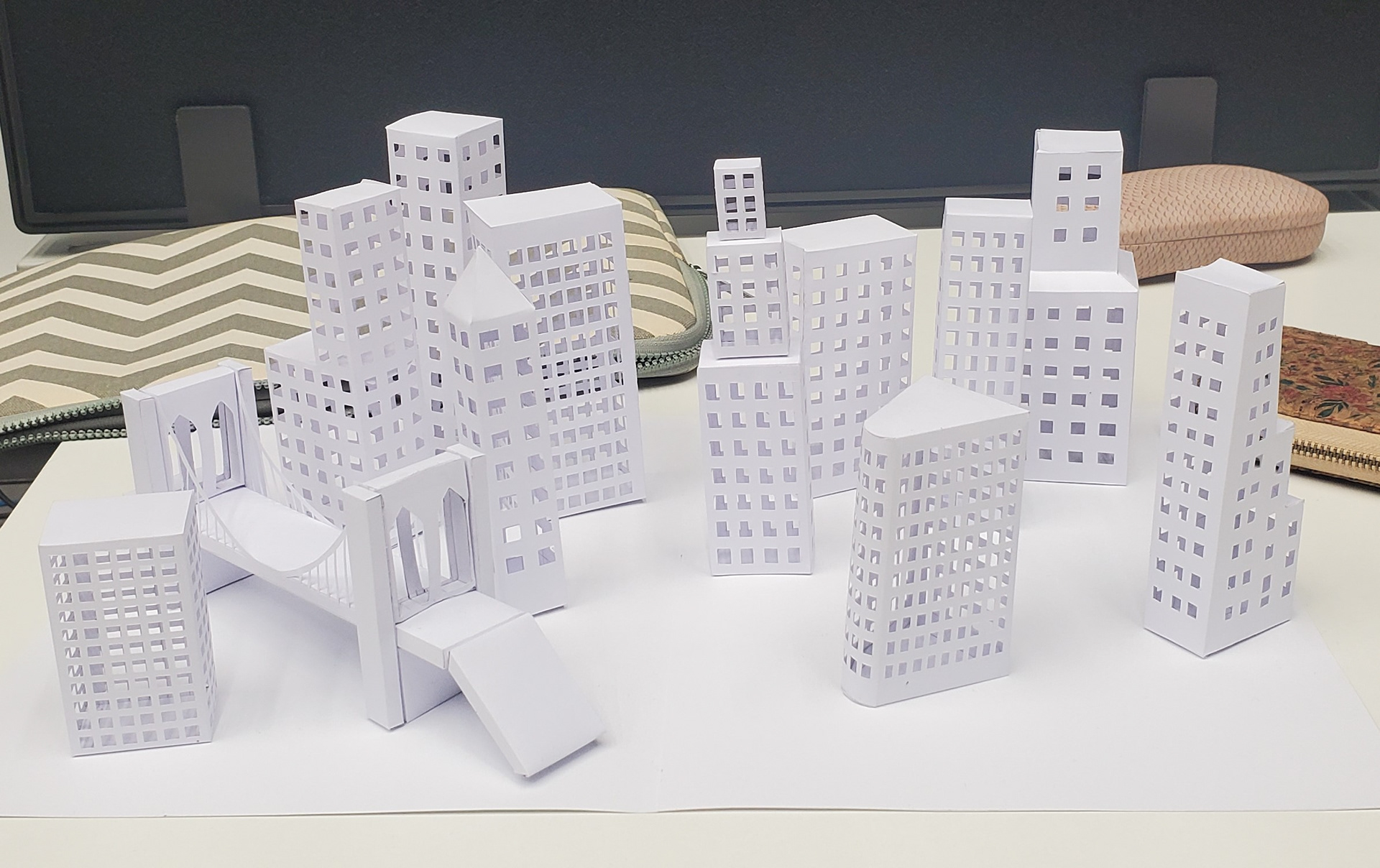

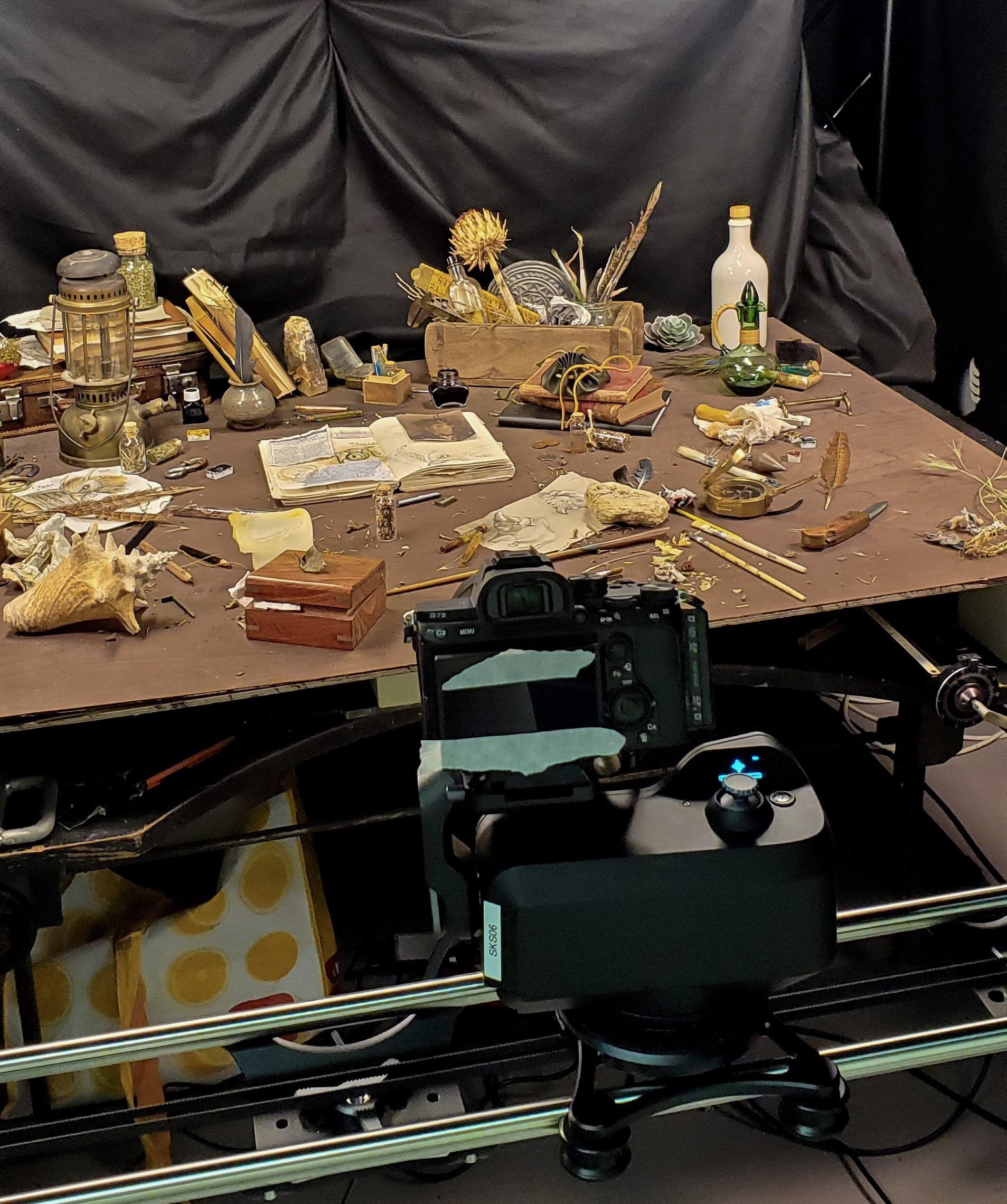
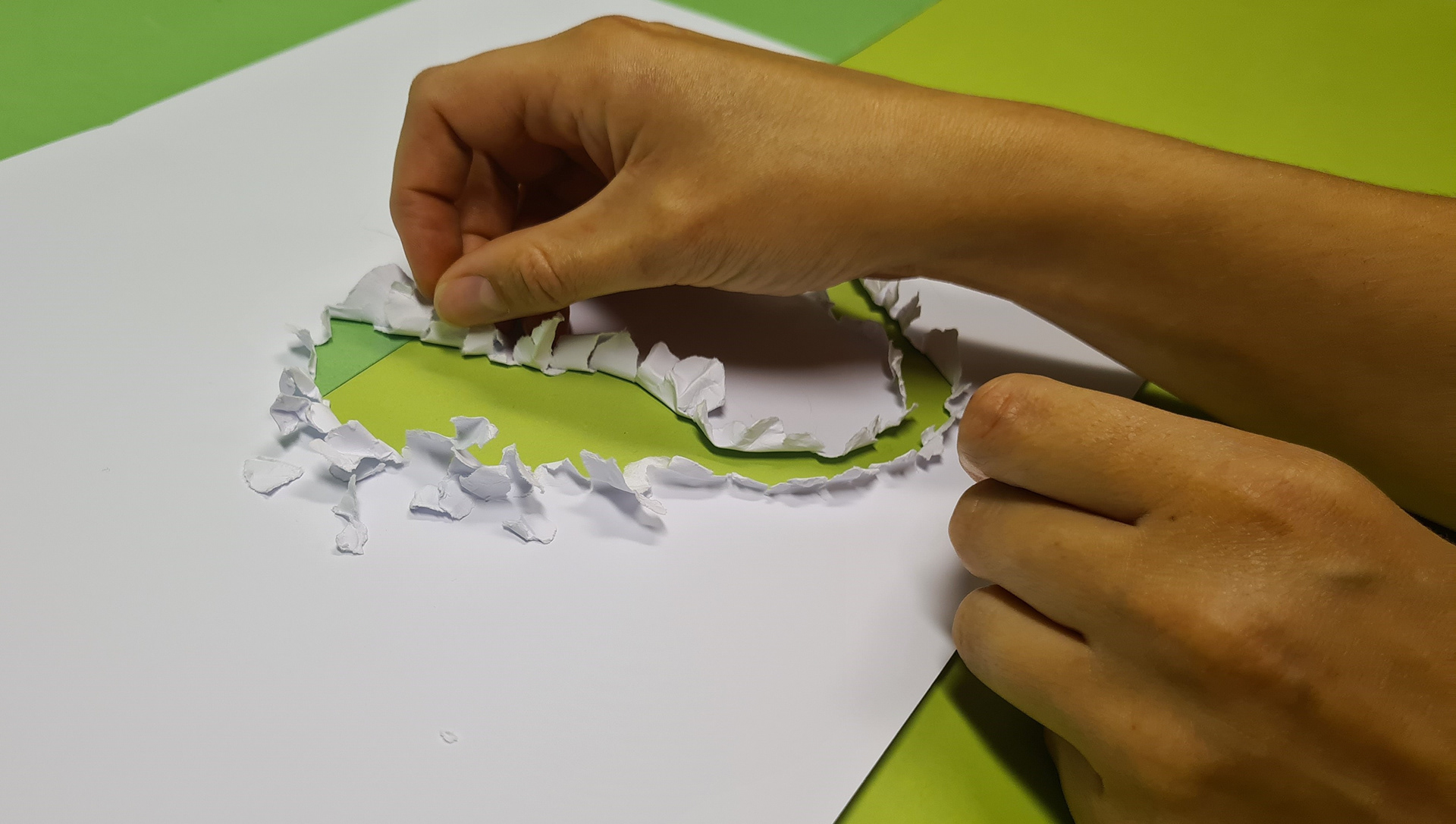
Post-Production
Now the filming was done and the last big part was the post-production. We divided the work up so that everyone had one or more scenes to prepare. I mainly focused on the city scene and did a lot of After Effects work. I had to remove the green-screen, position the city on the book, mask the Obscurus and colour grade the paper to match the book pages. I also did the tracking of the tree video and the page in general in the Demiguise scene. The rest of the group worked on the birds and the frame-by-frame animations and did a first rough cut.
The editing process was overlooked by all of us until everything was done. The sound effects were collected and created by all of us. The last steps were colourgrading and the final scene. Here we needed much more time than we thought. For the final scene we digitally drew the title of the film and created a fog and ink bleed effect. With the sound, it was a very fitting dramatic ending.

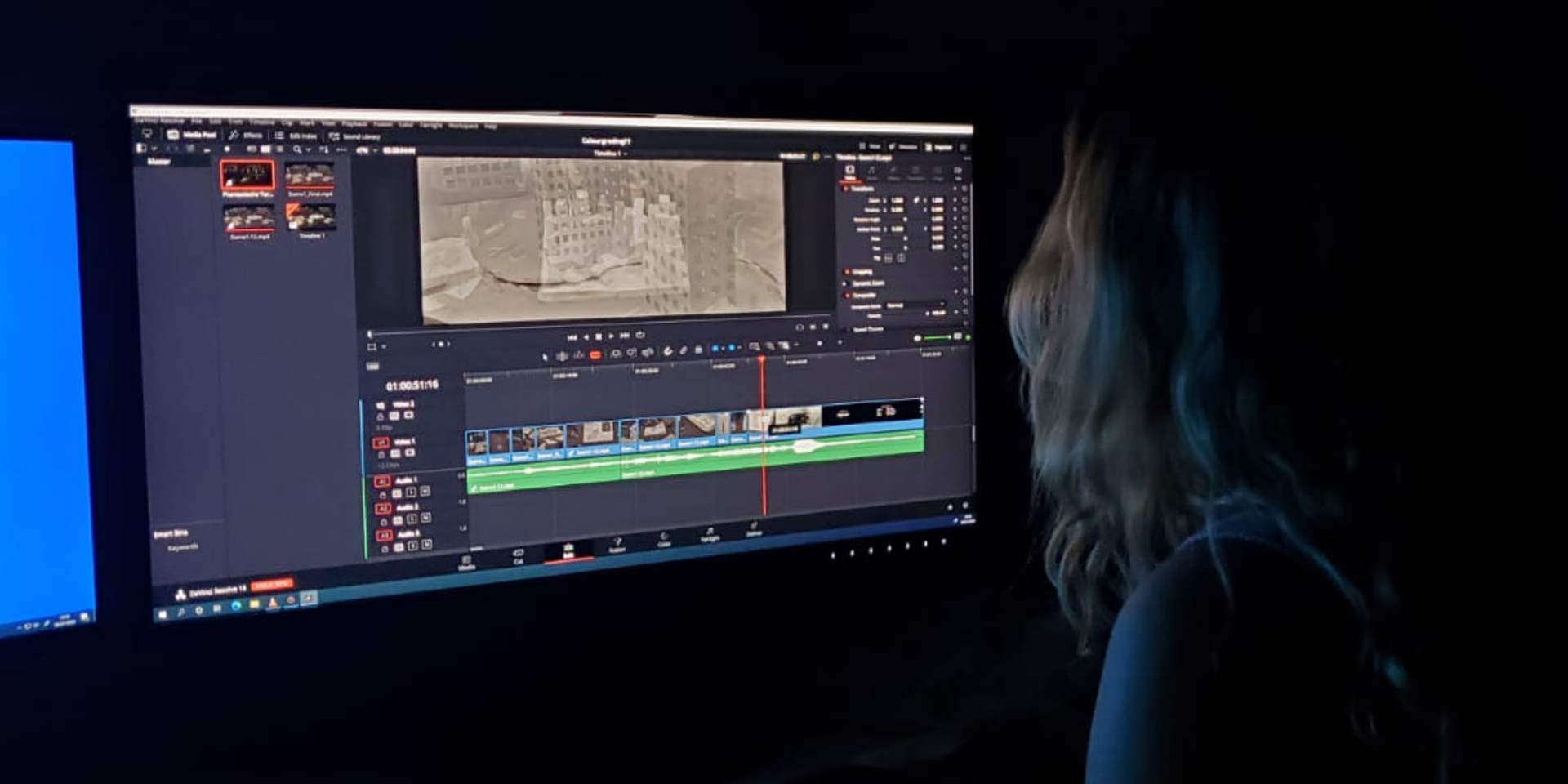
Conclusion
This project was the introductory course in film. This was my first time working with real camera equipment and learning about the process of making a film. I gained a lot of knowledge and experience from this course. Our plan was to make the most of it by mixing all these different styles of animation. My knowledge in After Effects and Premiere Pro has also improved and working in a team allowed everyone to show their strenghts. I am happy with how the final film intro turned out.
Other group members: Chiara Lühr, Maja Litzke, Maja Schrand